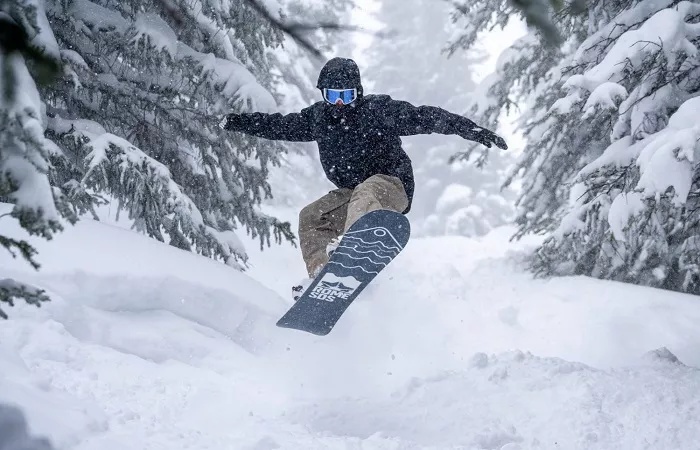When winter rolls in, adrenaline seekers flock to snowy slopes to indulge in exhilarating sports like skiing and snowboarding. Both offer thrilling experiences, but beyond the excitement, many health-conscious enthusiasts wonder: which activity helps burn more calories? This article provides a comprehensive breakdown of skiing versus snowboarding in terms of energy expenditure, physical engagement, and health benefits. Whether you’re aiming to stay fit or simply want to optimize your slope time, understanding the calorie-burning potential of each sport can help you make informed decisions.
Understanding Calorie Burn
Calorie expenditure depends on various factors. These include body weight, activity duration, intensity level, skill, and terrain. Winter sports are unique in that they combine cardiovascular engagement with muscular demand and cold weather metabolism.
Why Winter Sports Burn More Calories
Cold temperatures cause the body to work harder to maintain internal warmth. This thermogenic process adds to overall calorie burn. Both skiing and snowboarding utilize multiple muscle groups while incorporating balance, strength, and coordination. These demands increase the number of calories burned compared to static workouts.
Overview of Skiing
Skiing involves using two skis, each attached to one foot, and poles for guidance. It requires independent leg control and constant weight shifting. Different forms exist, including alpine (downhill), cross-country, and backcountry skiing.
Muscle Groups Engaged in Skiing
Skiing engages quadriceps, hamstrings, calves, glutes, core, and lower back. Poles activate shoulders, triceps, and biceps, especially when skiing on varied terrains or in cross-country formats.
Estimated Calorie Burn in Skiing
- Recreational downhill skiing: 350–500 calories/hour (for a 155-pound individual)
- Cross-country skiing: 500–700 calories/hour
- Uphill/backcountry skiing: 700–1,000+ calories/hour
Factors That Affect Calorie Burn in Skiing
- Intensity: Aggressive skiing on moguls or powder increases burn
- Duration: Longer sessions lead to higher cumulative expenditure
- Skill level: Advanced skiers maintain higher speeds and control
Overview of Snowboarding
Snowboarding uses a single board attached to both feet. Movements involve carving, edge control, and lateral body orientation. It combines elements of surfing, skateboarding, and skiing.
Muscle Groups Engaged in Snowboarding
Snowboarding primarily activates the core, glutes, hamstrings, calves, and hip stabilizers. Upper body involvement is less than in skiing unless falls or jumps are frequent. Balance and coordination are critical.
Estimated Calorie Burn in Snowboarding
- Recreational snowboarding: 300–450 calories/hour (for a 155-pound individual)
- Terrain park or aggressive riding: 500–600+ calories/hour
Factors That Affect Calorie Burn in Snowboarding
- Skill level: Beginners often burn more due to frequent falls and stops
- Snow conditions: Powder demands more effort than groomed trails
- Riding style: Freestyle burns more than casual carving
Comparing Skiing and Snowboarding Side by Side
| Aspect | Skiing | Snowboarding |
|---|---|---|
| Average Calories Burned | 350–1,000+/hour | 300–600+/hour |
| Muscles Used | Full-body with upper body use | Primarily core and lower body |
| Balance & Coordination | Moderate to high | Very high |
| Learning Curve | Steeper but faster progress | Slower start but rapid improvement |
Cold Exposure And Energy Burn
Cold temperatures increase resting metabolic rate. Activities like skiing and snowboarding are typically performed outdoors in frigid environments. The body must generate more heat, increasing calorie usage, even when coasting on lifts or waiting in queues.
High-Intensity vs Recreational Riding
Professional athletes and advanced riders expend more energy than recreational users. For instance, ski racers and freestyle snowboarders undergo high-impact training, pushing their bodies to anaerobic limits. Recreational users have more rest periods and smoother slopes, reducing exertion.
Snowboarding vs Skiing: Which is Better for Weight Loss?
If weight loss is the goal, skiing typically offers greater calorie expenditure, particularly in cross-country and backcountry formats. However, snowboarding can still contribute significantly, especially when practiced intensively. The best activity is the one you enjoy and consistently perform.
Additional Considerations
Terrain
Steeper slopes and powder require more energy. Groomed runs are smoother and less strenuous. Parks introduce jumping and acrobatics, increasing burn.
Gear Weight
Ski boots, poles, and skis add more total load than a snowboard setup, contributing to higher energy demand during walking or hiking.
Learning Fatigue
Beginners in either sport burn more calories due to repeated falls, nervous tension, and frequent motion adjustments. As skill improves, efficiency increases, potentially reducing overall energy burn unless the difficulty of terrain or pace increases accordingly.
Integrating Snow Sports Into Fitness Routines
Both skiing and snowboarding can be excellent cardio workouts when practiced regularly. For those looking to cross-train, alternating between the two can challenge different muscle groups. When used as part of a weekly exercise regimen, winter sports offer physical diversity and motivation.
Final Verdict: Does Skiing Burn More Calories?
Yes, in most conditions, skiing—particularly cross-country or aggressive downhill—burns more calories than snowboarding. However, snowboarding remains a highly demanding activity with its own metabolic advantages. Ultimately, consistency, intensity, and enjoyment will determine long-term benefits.
Helpful Resources
Looking to upgrade your snow equipment to get the most from your winter workouts? Explore the latest Snowboarding Gear and skiing gear for peak performance and calorie-burning potential.
Conclusion
Choosing between skiing and snowboarding goes beyond calorie burn. While skiing may edge out in terms of raw expenditure, both offer fun, full-body workouts in stunning natural environments. Commit to the one that inspires you to stay active and push your limits.

